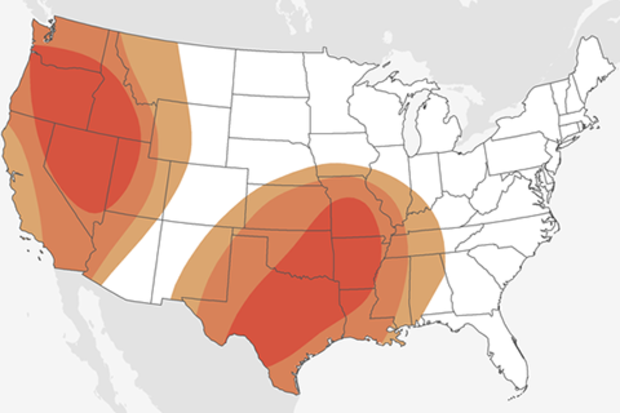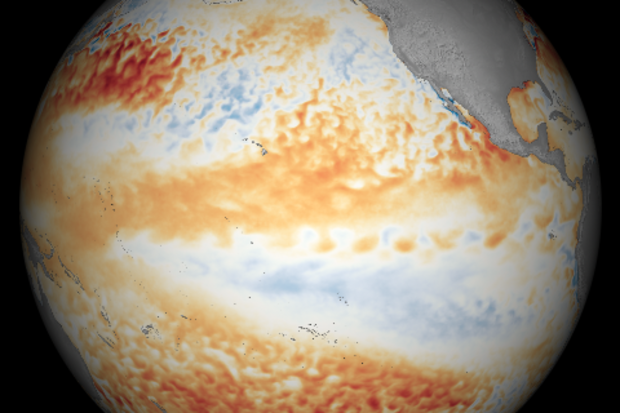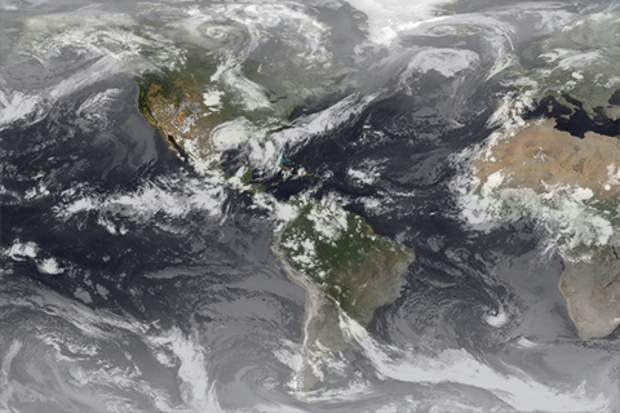Blogs
The chance that El Niño conditions will be in place across the tropical Pacific by the fall is about 65%, and close to 70% by the winter, continuing the El Niño Watch from last month. Here in the U.S., with sultry weather from coast to coast, it’s hard to think about winter right now…but that’s our job! After a trip through the tropical Pacific, we’ll get into what El Niño could mean for global weather and climate this winter.
A splash in the pool
The tropical Pacific is still well within neutral limits. The temperature of the ocean surface in the Niño3.4 region has edged above average, with June 2018 coming in about 0.11 degrees Celsius above the long-term average, based on our best-q…
Read article
* { margin: 0; padding: 0; }
#page-wrap { width: 620px; margin-left: 0px; position: relative; margin-top: 10px; margin-bottom: 20px;}
a { text-decoration: none; color: black; }
.image-link { display: block; width: 620px; height: 470px; position: absolute; top: -505px; left: 0px; }
#one { background: url(/sites/default/files/ENSO_blog_Fig2_temp_forecast__3-4_week_outlooks_620.jpg) no-repeat; z-index: 4; }
#two { background: url(/sites/default/files/ENSO_blog_Fig2_MJP_expected_contr_3-4_week_outlooks_620_0.jpg) no-repeat; z-index: 3; }
#three { background: url(/sites/default/files/ENSO_blog_Fig2_CFS_modeled_3-4_week_outlooks_620_0.jpg) no-repeat; z-index: 2; }
#four { background: url…
Read article
Well, well, well… what have we here? Favorable conditions for El Niño to develop? The June ENSO forecast estimates a 50% chance of El Niño developing during the late summer or early autumn, and an approximately 65% chance of El Niño conditions in the winter, so forecasters have instituted an El Niño Watch.
Who’s on first
Before we get into the potential for El Niño, let’s talk about right now. We are in neutral, and forecasters expect that ENSO-neutral conditions will play on through the summer. The surface temperature of the tropical Pacific Ocean is close to the long-term average in most areas, including the Niño3.4 region (our primary monitoring region for ENSO), which was smack-dab…
Read article
* { margin: 0; padding: 0; }
#page-wrap { width: 620px; margin-left: 0px; position: relative; }
a { text-decoration: none; color: black; }
.image-link { display: block; width: 620px; height: 480px; position: absolute; top: -512px; left: 0px; }
#one { background: url(/sites/default/files/grid-ranks-tmax-201805-620px.gif) no-repeat; z-index: 3; }
#two { background: url(/sites/default/files/grid-ranks-prcp-201805-620px.gif) no-repeat; z-index: 2; }
#three { background: url(/sites/default/files/grid-ranks-tmin-201805-620px.gif) no-repeat; }
#one span { position: absolute; left: 0; bottom: -42px; text-align:center; font-family:"Trebuchet MS", Arial, Helvetica, sans-serif; }
#two span { …
Read article
Tell someone you forecast for a living and they often think of their favorite weather broadcaster. “Are you on TV?” is the second question asked after “Oh, great! Can you tell me what I should bring/wear tomorrow?” After an awkward pause, I tell them I don’t forecast the daily weather, instead, I forecast the climate (the awkward pause explains why I prefer blogging over TV).
So, what exactly do you do?
First, confession time: my expertise is in forecasting ENSO, but luckily, my colleagues at the NOAA Climate Prediction Center (CPC) are the world-class forecasters who provide climate outlooks. If you’re a regular reader of the ENSO blog, then you have already…
Read article




